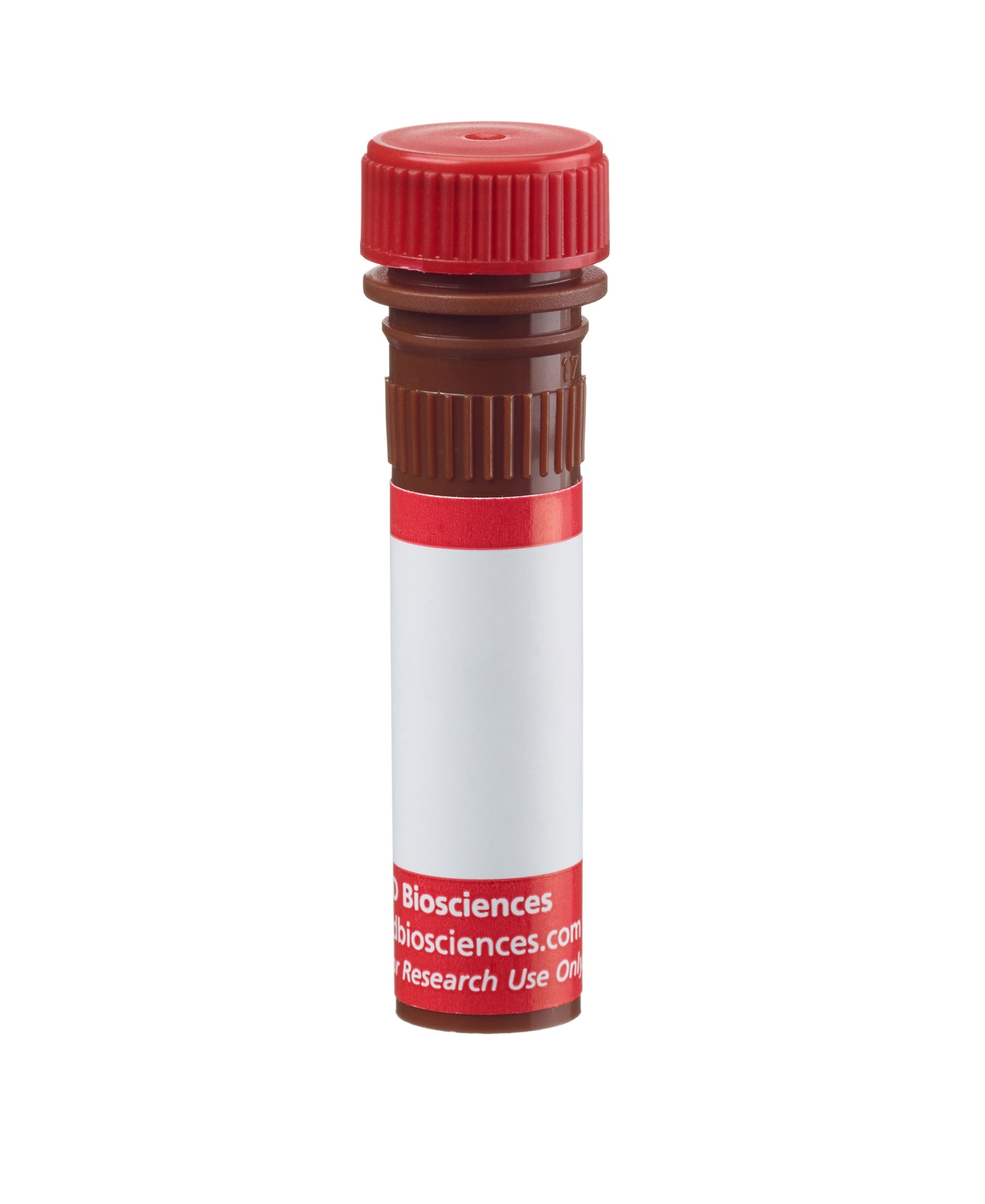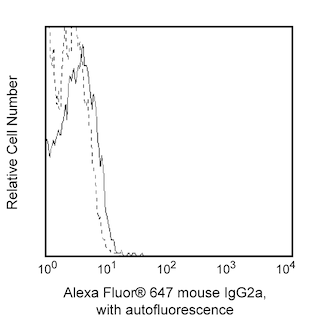Old Browser
This page has been recently translated and is available in French now.
Looks like you're visiting us from {countryName}.
Would you like to stay on the current country site or be switched to your country?




Flow cytometric analysis of DO-11.10 TCR expression on BALB/c-derived DO-11.10 transgenic mouse (BALB/c-TgN(DO11.10)10Loh) thymocytes. Thymocytes were stained with either Alexa Fluor® 647 Mouse Anti-Mouse DO-11.10 clonotypic TCR (Cat. No. 562524, solid line histogram) or an Alexa Fluor® 647 mIgG2a, κ Isotype Control (Cat. No. 557715; dashed line histogram). Flow cytometric fluorescence histograms were derived from gated events with the forward and side light-scatter characteristics of viable thymocytes. Flow cytometry was performed using a BD™ LSR II Flow Cytometer System.


BD Pharmingen™ Alexa Fluor® 647 Mouse Anti-Mouse DO-11.10 Clonotypic TCR

Regulatory Status Legend
Any use of products other than the permitted use without the express written authorization of Becton, Dickinson and Company is strictly prohibited.
Preparation And Storage
Product Notices
- Since applications vary, each investigator should titrate the reagent to obtain optimal results.
- An isotype control should be used at the same concentration as the antibody of interest.
- Please refer to www.bdbiosciences.com/us/s/resources for technical protocols.
- The Alexa Fluor®, Pacific Blue™, and Cascade Blue® dye antibody conjugates in this product are sold under license from Molecular Probes, Inc. for research use only, excluding use in combination with microarrays, or as analyte specific reagents. The Alexa Fluor® dyes (except for Alexa Fluor® 430), Pacific Blue™ dye, and Cascade Blue® dye are covered by pending and issued patents.
- Alexa Fluor® is a registered trademark of Molecular Probes, Inc., Eugene, OR.
- Alexa Fluor® 647 fluorochrome emission is collected at the same instrument settings as for allophycocyanin (APC).
- Caution: Sodium azide yields highly toxic hydrazoic acid under acidic conditions. Dilute azide compounds in running water before discarding to avoid accumulation of potentially explosive deposits in plumbing.
- For fluorochrome spectra and suitable instrument settings, please refer to our Multicolor Flow Cytometry web page at www.bdbiosciences.com/colors.
Companion Products


The KJ1-26 monoclonal antibody specifically reacts with the DO-11.10 Clonotypic T-cell Receptor (TCR) of the BALB/c-derived DO-11.10 T-cell hybridoma and T lymphocytes from the DO-11.10 transgenic mouse (TgN[DO-11.10]10Loh). The DO-11.10 TCR, an 80-90-kDa (non-reduced) or 40-44-kDa (reduced) protein, is specific for the chicken OVA(323-339)/I-A[d] complex. The DO-11.10 T-cell hybridoma also responds strongly to chicken OVA/I-A[b] and jungle fowl OVA/I-A[d] and weakly to turkey OVA/I-A[d] and I-A[b]. The DO-11.10 mouse model is valuable for studies of T-cell immigration, immunoregulation, development, activation, and function. The KJ1-26 mAb was shown to block the antigen responses of the DO-11.10 T-cell hybridoma in vitro.
Development References (7)
-
Egan RM, Yorkey C, Black R, Loh WK, Stevens JL, Woodward JG. Peptide-specific T cell clonal expansion in vivo following immunization in the eye, an immune-privileged site. J Immunol. 1996; 157(6):2262-2271. (Biology). View Reference
-
Garside P, Ingulli E, Merica RR, Johnson JG, Noelle RJ, Jenkins MK. Visualization of specific B and T lymphocyte interactions in the lymph node. Science. 1998; 281(5373):96-99. (Clone-specific: Immunohistochemistry). View Reference
-
Haskins K, Kubo R, White J, Pigeon M, Kappler J, Marrack P. The major histocompatibility complex-restricted antigen receptor on T cells. I. Isolation with a monoclonal antibody. J Exp Med. 1983; 157(4):1149-1169. (Immunogen: Blocking, Immunoprecipitation, Inhibition, Neutralization, Radioimmunoassay). View Reference
-
Jackson Laboratories. Jax® Mice and Services. Available: http://jaxmice.jax.org 2001, November.
-
Lee WT, Cole-Calkins J, Street NE. Memory T cell development in the absence of specific antigen priming. J Immunol. 1996; 157(12):5300-5307. (Biology). View Reference
-
Marrack P, Shimonkevitz R, Hannum C, Haskins K, Kappler J. The major histocompatibility complex-restricted antigen receptor on T cells. IV. An antiidiotypic antibody predicts both antigen and I-specificity. J Exp Med. 1983; 158(5):1635-1646. (Clone-specific: Blocking, ELISA, Immunoprecipitation). View Reference
-
Murphy KM, Heimberger AB, Loh DY. Induction by antigen of intrathymic apoptosis of CD4+CD8+TCRlo thymocytes in vivo. Science. 1990; 250(4988):1720-1723. (Biology). View Reference
Please refer to Support Documents for Quality Certificates
Global - Refer to manufacturer's instructions for use and related User Manuals and Technical data sheets before using this products as described
Comparisons, where applicable, are made against older BD Technology, manual methods or are general performance claims. Comparisons are not made against non-BD technologies, unless otherwise noted.
For Research Use Only. Not for use in diagnostic or therapeutic procedures.
Report a Site Issue
This form is intended to help us improve our website experience. For other support, please visit our Contact Us page.